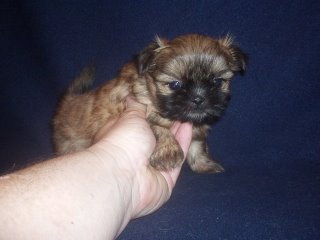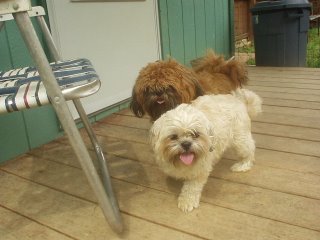Hiring a pet sitter
If you are traveling far away from home without your Shih Tzu, you might want to hire a pet sitter who could take care of your Shih Tzu full-time. A pet sitter could be a member of your family or a friend who could stay over in your house and watch over your Shih Tzu. You could also ask your veterinarian who could recommend someone to do the pet-sitting.
Leaving the Shih Tzu in a kennel
If you choose to leave your Shih Tzu in a kennel, shop around for recommendations for a good one from friends that own Shih Tzu or your vet. Go to the kennel before taking your Shih Tzu and check if animals look well-cared for and the facilities comfortable and clean. Chat with the staff to make sure that your Shih Tzu will be cared for properly.
Traveling with your Shih Tzu
Should you decide that you’re bringing the Shih Tzu along in your travel, ask the vet some tips on how to best travel with a dog, including problems on the transportation method. Ask if he or she could give your Shih Tzu a certificate of clean health.
If you are flying via airplane, you should have a sturdy carrier for your Shih Tzu. If not, the airline could ask you to buy a carrier from them. Some airlines allow your pet in the passenger compartment with you. Some put all the animals in the luggage compartment.
If you are riding in a car, the air conditioning should be kept on. Do not leave your Shih Tzu unattended in a car that is parked. Do not park in direct sunlight even for a brief period of time, as it could drastically raise the heat temperature inside your car that might result in dehydration, heat stroke, or worse.
Foreign travel
Traveling with a Shih Tzu or any other pet in foreign countries can prove to be difficult. Check with your vet for some tips. You might also want to ask the local consulate of the country you are visiting what are their requirements for you to bring your pet along.
Going places with your Shih Tzu may be a pleasant experience. But you should remember taking a Shih Tzu, or any pet with you, anywhere could be a bit difficult.
Author: Connie Limon. I raise Shih Tzu puppies from top champion bloodlines in many different colors of blues, reds, chocolates, blacks. We have the small AKC standards, imperials and teacups. We offer you educational material, dog bows and dog clothes. Visit us online at: http://www.stainglassshihtzus.com and sign up for our FREE newsletter to receive valuable discounts.
This article is FREE to publish with resource box.

